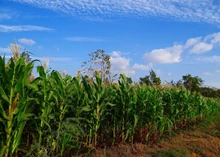
Arable crop production is known as a standardized use of land to grow crops. Farmer detects how productive their land is and then they follow a procedure of construction after the previous year’s harvest to have a persistent supply of their valuable produce.
Arable farming includes growing crops like wheat and barley instead of growing vegetables and fruits or keeping animals. It is used to accomplish the rising demand of food. It can be performed mainly in small scale, commercial or on large agricultural farms.
There are different types of Arable Crops-
-
Grain crops such as wheat, maize, rice, barley and millet which are fertilized for their edible starch grains.
-
Pulse crops for their edible seeds such as lentil, beans and peas which are high in protein.
-
Oil seed crops like rapeseed, soybean, sunflower are grown for extraction of oil from their seeds.
-
Forage crops such as cowpea, timothy and clovers which are fresh and are preserved for feeding animals.
-
Fiber crops like cotton and jute which are fertilized for non-food use.
-
Tuber crops like potato and elephant yarn which are grown for their edible underground parts.
Arable farming offers us many of our staple foods and is also accountable for producing oil and fodder for animals. It produces a large variety of annual crops.
Annual crops are basically the crops that start from germination and end to grain production within 12 months.
Arable farming develops crop rotation system, which helps in controlling specific weeds, pests and diseases which are linked with specific crops and provides environmental benefits like upgrading the soil structure by sowing pasture and raising the levels of soil nitrogen by growing legume crops.
In India, arable crops are grown in a widespread area across the country. Globally, it is mainly done in eastern England including Lincolnshire and Norfolk and the east of Scotland. Arable farms have earth’s 57 million square miles of land which is almost 12 million of square miles; nonetheless arable land is being lost at the rate of 100,000 km² every single year.
Arable farming has some disadvantages too, such as:
-
High mechanical cost
-
Decrement in soil fertility
-
High crop maintenance cost, pest and weed control.
-
Climate sensitive
-
Feeding a growing population
Arable agriculture manipulates soil to a great extent in order to fertilize crop plants to feed the increasing human population.











